The Independent's journalism is supported by our readers. When you purchase through links on our site, we may earn commission.
Chisinau city guide: Where to eat, drink, shop and stay in Moldova’s great-value capital
Imposing Soviet architecture, curious eats and a surprising wine scene - this bargain eastern break will broaden your view of what Europe looks like, says Tim Cooper
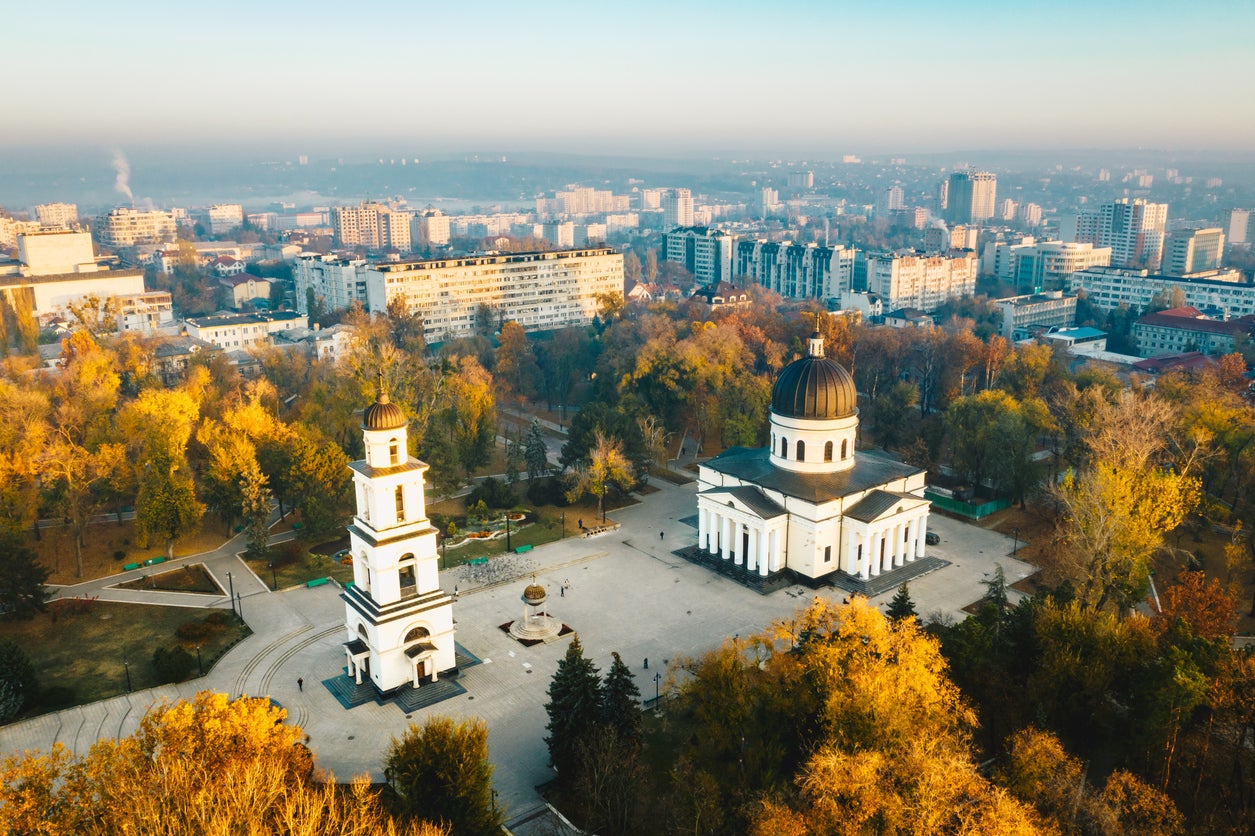
First things first: it’s “Keeshy-now”. Call it “Chizzy-now” and the locals won’t know what you’re talking about. Second thing: be prepared for your friends to ask you where it is. And, for that matter, where Moldova is.
The country is a former Soviet state on the far eastern edge of Europe, sandwiched between Romania to the west and Ukraine to the east. And it’s less than three hours’ flight away from London. It’s also the poorest country in Europe by pretty much every measure – as well as one of the least visited by tourists.
The capital, Chisinau, has a population of 600,000, and has everything you might want from a city – museums, galleries, shops, bars, markets, restaurants, decent wifi and above all, cheap prices. We’re talking £1.30 for a pint. And no stag parties… yet.
Plus (and it’s a big plus) Moldova is the wine capital of Europe, with an annual wine festival every October (2-6 October this year), when around 100 producers from all over the country descend on the capital (some in horse and cart) to showcase their wares, along with traditional costumes, dancing, music and barbecue food. What’s not to like?
What to do
Explore on foot
Chisinau is a small compact city so it’s easy to walk around. Get your bearings at the neoclassical Nativity Cathedral, with its distinctive dome. You’ll probably be staying near its home in Cathedral Square, a popular spot for canoodling teenagers to meet. Or the nearby Triumphal Arch celebrating the Russians’ victory over the Ottoman Empire 200 years ago.
Stefan cel Mare Boulevard, named after Moldova’s 15th-century national hero Stephen the Great (you’ll see his statue outside the park named after him) and you’ll hit the shopping district and sprawling market area. Walk the other way and you’ll see vast government buildings. If you’re wondering why the road is so unnecessarily wide – the Soviets liked to be sure they could get tanks into town at a moment’s notice.
Venture further afield and you may stumble upon hidden delights like the Armenian Church, the Afghan war memorial, the Bulgarian memorial chapel and the modest Chisinau spring monument (which gave the city its name) at the foot of a hill topped by one of Chisinau’s oldest buildings, the Mazarachi church. You might also wish to visit the moving memorial on the corner of Jerusalem Street – all that’s left of the Jewish ghetto that once housed 50,000.
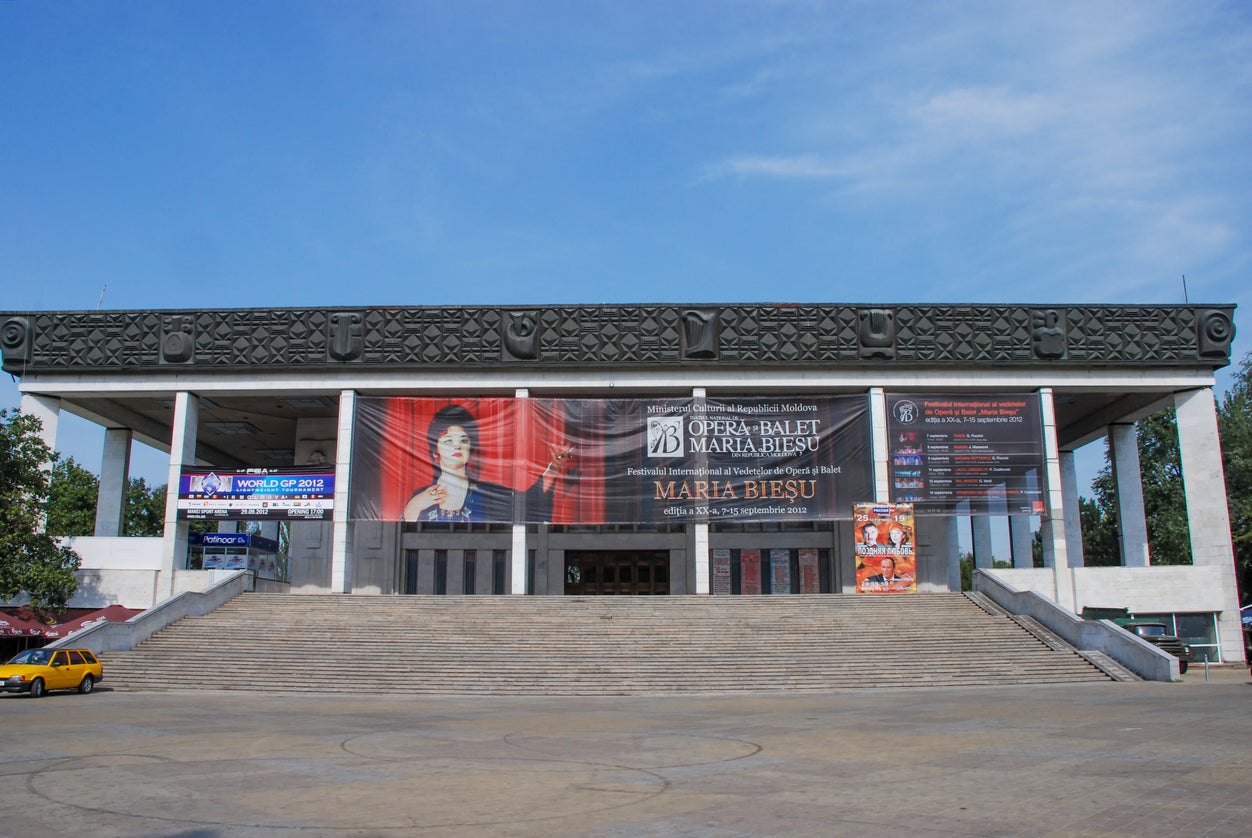
Brush up on Moldovan history
The imposing National Museum of History is worth a visit, not least to get a grasp of the complicated background to the country formerly known as Bessarabia (and Moldavia), which has at times been part of both Romania and the USSR. A little off the beaten track you’ll find the National Museum of Ethnography and Natural History, though the spectacular neo-Moorish building itself, resembling a mosque, is arguably more impressive than the contents, which are heavy on archaeological artefacts and dinosaur bones (and not in English). The National Arts Museum combines the best of both: housed in a grand 19th century building that somehow survived Soviet conversion, its gleaming-white interior houses columns and a geometric staircase – and impressive exhibitions ranging from religious iconography to contemporary artists.
Enjoy the park life
For a change of scene, the wide-open green spaces of Valea Morilor Park are a pleasant 30-minute walk from the city centre. It’s not exactly historic: it was created in the 1950s as a Soviet-style “Central Park of Culture and Rest”, and the lake is not only manmade but hand-dug. But it’s a serene spot, and very popular with the locals for walking, jogging and swimming off its artificial beach. Its must-see feature is a long, waterfall-trimmed staircase with romantic views over the lake.
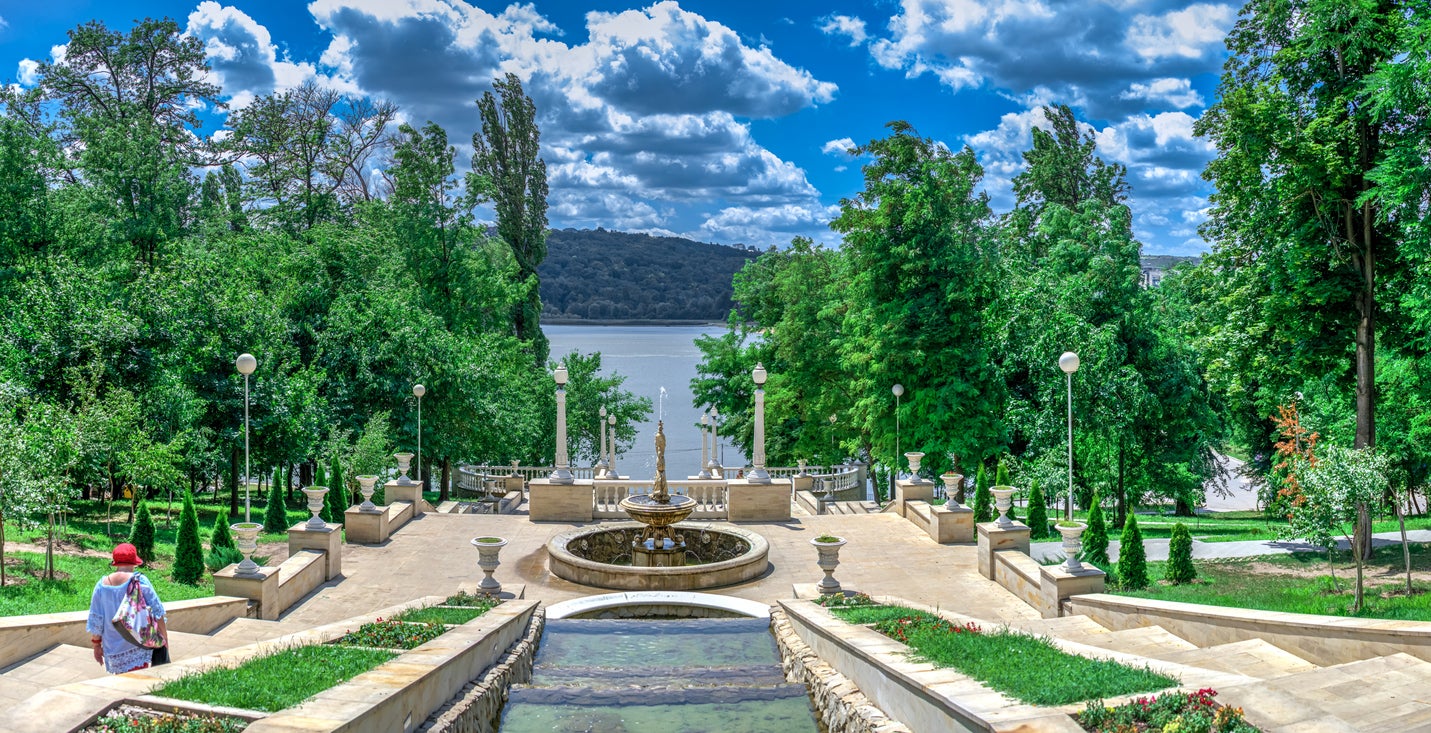
Further afield
“Get out of town” might seem an odd suggestion for a city break, but most of Chisinau’s delights can be done in a day. A trip to the Moldovan countryside, however, is like a journey back in time. Nowhere more so than Orheiul Vechi (Old Orhei), an Insta-perfect destination just 40 miles northeast of the capital. Wander around the village of Butuceni, with its gaily painted cottages, before climbing up to the white belltower and stone cross on top of the cliff with spectacular views across the Raut river. Then clamber down a stone staircase into the limestone cliff to discover the 13th century cave monastery – complete with resident elderly Orthodox monk.
Or take the 90-minute bus to Bender and cross the border into the breakaway republic of Transnistria – a country that does not officially exist. This self-declared independent communist state between Moldova and Ukraine has its own currency (coloured plastic coins!), border guards and police force. A visit to the capital Tiraspol is a throwback to Soviet times, with Lenin statues, tanks on pedestals – and an excellent brandy distillery. Day trips are easy and cheap by bus from Chisinau.
Where to stay
Of the many hotels clustered around Cathedral Square, Bristol Central Park Hotel has doubles from £54, B&B (bristol.md). A little further out, Home Sweet Home has doubles for £35 (home-sweet-home.hotel-chisinau.com) and the highly rated Amazing Ionika Hostel is central, with dorm beds from £7 and individual doubles from £18 (facebook.com/amazingionikahostel).
Where to eat
Moldovan cuisine is not likely to lead to any Michelin stars any time soon and, like most of eastern Europe, vegetables are regarded with suspicion, unless pickled. Specialities to look out for include the polenta-like cornmeal porridge mamaliga, cabbage rolls (golubti) and soups like borsch (beetroot), zama (chicken and noodle), and chorba (meat and veg), solyanka (ditto), which are often sour.
Another unique foodstuff to try is placinta – a pastry stuffed with a range of savoury or sweet fillings, not all of them involving cabbage – and a puff pastry adaptation called vertuta. La Placinte is an excellent chain serving its namesake in many varieties.
For a traditional Moldovan meal, La Taifas offers a pricier and more touristy experience with waiters in traditional costume. Or for something a bit different, Gok-Okuz serves the cuisine of Uzbekistan and Gagauzia – an autonomous region in the south of Moldova. There’s upmarket Asian food at Jeraffe and there are plenty of fast-food options, both international and local – try pastries at the ubiquitous Franzeluta, or pick up a pastrami at one of the Carmez stores, easily spotted by their gaudy red signs.
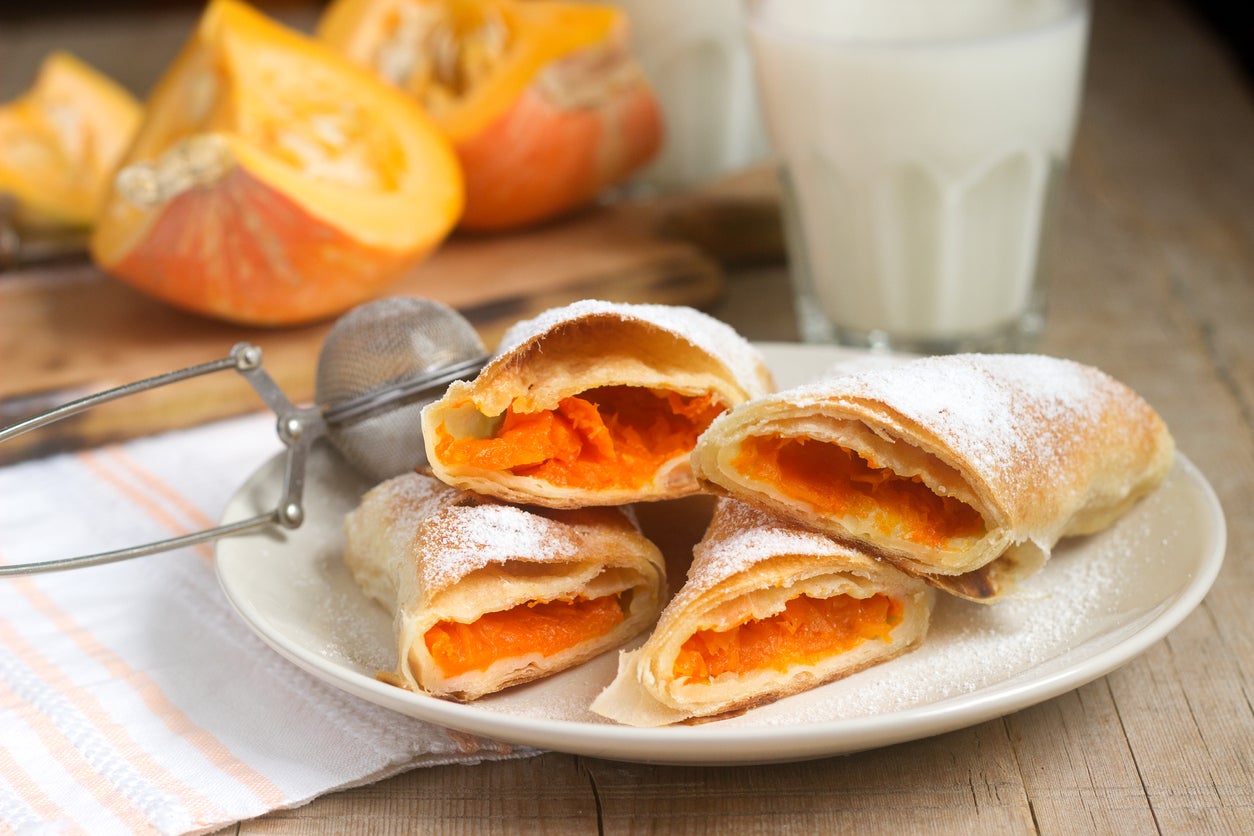
Where to drink
Coffee: Every few yards there’s a hole-in-the-wall offering a murky black shot of caffeine for loose change. For a better (and pricier) freshly-brewed coffee, try Tucano – Chisinau’s answer to Starbucks – where you’ll find the local laptop brigade hunched over their screens with a flat white and a muffin. Just like home. Or, for a fairly authentic French atmosphere, not to mention tasty patisseries and croques monsieurs, go for a cafe au lait at nearby Creme de la Creme.
Wine: Moldova has more grapevines per capita than anywhere in the world, and it makes some exceptional wines. Unfortunately for us, most of it gets snapped up by the Russians. But things are changing. As well as popular tours and tastings of wineries outside Chisinau, there are several wine bars in the capital, like Carpe Diem, whose owners have a family vineyard near Codru in the far south of Moldova; Embargo Wine and Vinoteca Invino. Or buy bottles directly from Cricova Wine Shop and book a tour of the winery and its underground limestone tunnels, where Putin keeps his private collection. Regent Holidays runs a six-day Taste of Moldova group tour during the Wine Festival.
Beer: The craft beer revolution has reached Moldova too, with several breweries in Chisinau and others around the country. So while tattooed-and-bearded hipsters are thin on the ground, you’ll have no trouble finding a locally brewed pale ale. At the superb Taproom 27 just off the main drag, you can sample some of the bewildering array of local brews from Labrewtory, Litra or Tenemur, or an Elvis Porter from Duhoi. Or try all of them by ordering a flight of small glasses that go down rather too well with their addictive macaroni cheese balls. There’s even a craft brewery, Lumen Craft, at Chisinau airport.
Where to shop
The city’s central market sprawls for half a mile along Stefan cel Mare Blvd. Great for fruit and veg, it’s also the place to buy one of those furry deerstalkers – or a caciula, a boxy traditional Moldovan sheepskin hat. For souvenirs, cross the road to the Artists’ Square (“Arbat” to the locals), full of traditional musical instruments (pipes and flutes of various kinds) and Soviet memorabilia (medals, badges, pins). Or pick up souvenirs ranging from national costume to carpets, woven baskets and carved wooden trinkets.
For further souvenir hunting, Bucuria is a local confectioner specialising in chocolate-covered fruits - prunes being a particular favourite. Look out, too, for local delicacies like rose petal and white cherry marmalade. For something to drink with it, buy some local brandy (a match for Cognac, say the locals) at Calarasi Divin.
Architectural highlight
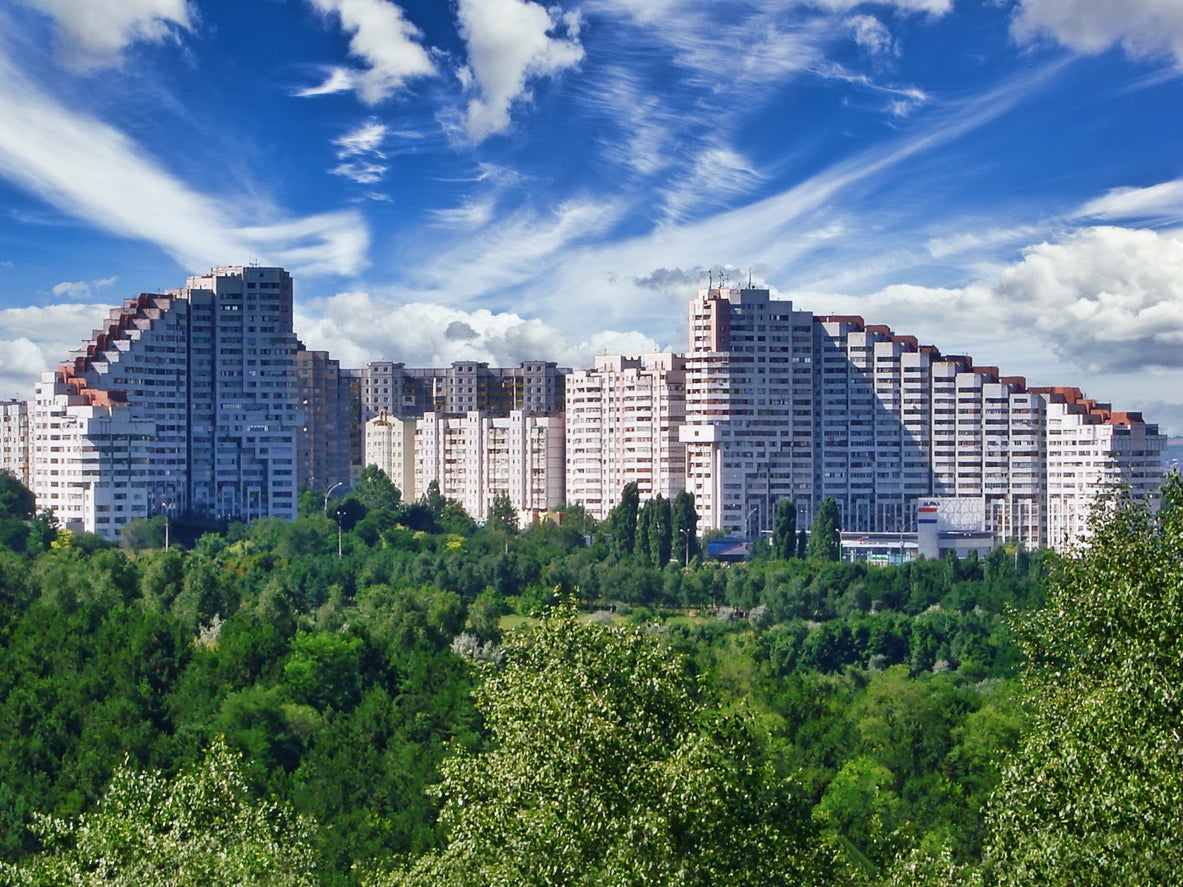
A short walk from the Triumphal Arch and Stefan cel Mare Park you’ll find a mind-boggling collection of vast buildings: the Soviet-built parliament building (shaped like an open book), the garish, cathedral-like Presidential Palace (once the Supreme Soviet’s HQ), and the Modernist monstrosity of the 18-storey Ministry of Agriculture (which looks like the world’s biggest conference hotel). Many of the older buildings have fallen into disrepair and have been vandalised. An exception is the beautifully preserved City Hall, built in the Italian Gothic style by the 19th century Russian architect Bernardazzi, who designed many of the city’s public buildings.
Nuts and bolts
What currency do they use?
Moldovan lei. £1 is approximately 26 lei.
What language do they speak?
Romanian is used by 80 per cent of people; English and Russian are also widely spoken.
Should I tip?
Usually 5-10 per cent is expected, even if service is included on your bill.
What’s the time difference?
Moldova is two hours ahead of the UK.
How should I get around?
The city is small enough to walk around and there are plenty of cabs. The trolley bus is the best bargain at 1 leu (0.05p) for a journey.
What’s the best view?
Order a cocktail or dine on Asian fusion food at Zaxi, the eighth-floor restaurant and bar atop the Radisson Blu Leogrand just off Cathedral Square.
Insider tip
Watch your step. Street lighting – and proper pavements – are still a luxury here leaving you on dark, uncertain ground at night. You might easily find yourself (as I did) in pitch black, only a few metres away from the central squares, stumbling along roads pitted with potholes and bumping into passers-by. Keep your mobile phone torch handy.
Getting there
Trying to fly less?
You can travel from the UK to Moldova entirely by train. Take the Eurostar to Paris, then a TGV and an ICE train on to Munich, via Stuttgart. From Munich you can take either a sleeper train, Kalman Imre, or a Railjet train to Budapest; from there, take the Ister sleeper train to Bucharest. Finally, take the Prietenia sleeper train to Chisinau.
Fine with flying?
Wizz Air flies to Chisinau from Luton. Regent Holidays organises various trips to Moldova for groups and individuals, including the Taste of Moldova group tour for the National Wine Festival – held this year from October 2-6 – from £1,175pp.
Join our commenting forum
Join thought-provoking conversations, follow other Independent readers and see their replies
Comments